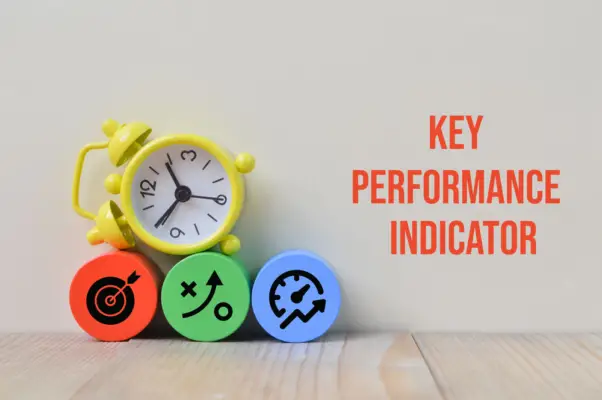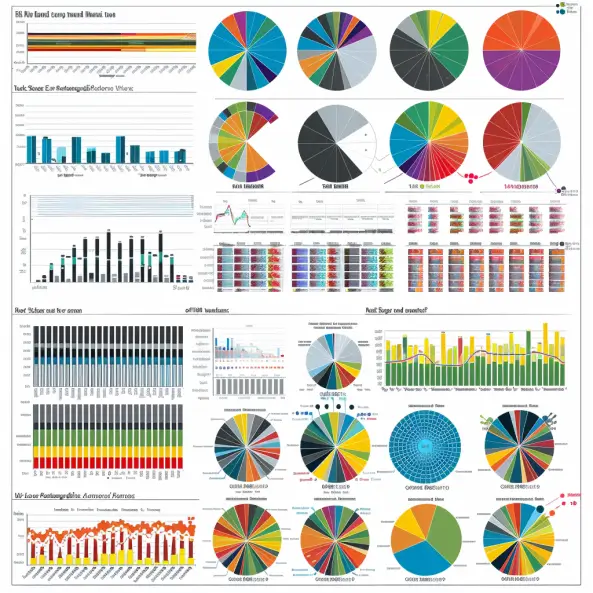A Key Risk Indicator (KRI) template helps organizations monitor risks and assess the effectiveness of their risk management strategies. A template typically includes:
- Indicator Name: A clear label for the KRI for easy reference.
- Description: Briefly describe what the KRI measures and why it is important.
- Risk Category: The type of risk it relates to (e.g., operational, financial, compliance).
- Thresholds: The limits or boundaries that define when the KRI should trigger an alert.
- Data Source: Where the information for the KRI is collected from.
- Collection Frequency: How often data for the KRI should be gathered and reviewed.
- Responsible Party: Who within the organization is responsible for monitoring this KRI.
- Reporting Format: The manner in which the KRI data should be presented (e.g., chart, graph, table).
- Action Plan: The steps to be taken if the KRI exceeds its thresholds.
For more information on KRIs and how they can be integrated into strategic planning, you may refer to resources like BSC Designer, which discusses the inclusion of KRIs in performance management and strategic planning.
When it comes to navigating the complex landscape of risk management, having a well-structured Key Risk Indicators (KRI) template is crucial for organizations seeking to identify and mitigate potential threats proactively.
A meticulously crafted KRI framework can serve as a compass, guiding decision-makers toward a clearer understanding of emerging risks across various domains.

However, simply having a template in place is not enough. The thoughtful implementation and continuous monitoring of KRIs to ensure timely interventions truly sets successful risk management strategies apart. Organizations can stay ahead of uncertainties by designing an effective KRI template.
Key Takeaways
- KRIs provide early warnings for potential risks.
- Monitoring KRIs enables proactive risk management.
- KRIs aid in assessing risk profiles and impacts.
- Regularly adjusting KRIs ensures alignment with evolving risks.
Importance of Key Risk Indicators
Understanding key risk indicators is crucial for businesses as they provide early warnings of potential risks. Monitoring these indicators allows organizations to address emerging threats before they escalate into major issues proactively.
Definition of key risk indicators
Key risk indicators are essential tools that provide organizations with early warning signs of potential risks that may impact their business operations.
- Definition: Key risk indicators are specific metrics for identifying and assessing risks.
- Template: A structured format for tracking and analyzing risk indicators.
- Operational Risk Management: Key in identifying and managing risks in daily operations.
- Enterprise Risk Management: Involves an organization’s holistic approach to risk management.
- Monitoring: Continuous tracking of risk indicators for timely action.
Importance of monitoring key risk indicators
Effective monitoring of key risk indicators is crucial for proactively identifying and mitigating potential risks that could impact an organization’s operational stability.
By continuously tracking key risk indicators, organizations can assess their risk profile, exposures, and levels, enabling informed risk assessments and management decisions.
This monitoring process helps in the early detection of emerging risk events, allowing for timely actions to be taken to safeguard the organization’s interests.
Types of Risk
Risk categorization plays a fundamental role in enhancing the effectiveness of key risk indicators in guiding organizational decision-making and strategic planning.
- Businesses must identify key risks.
- Examples of types of risk include operational and competitive risk.
- Understanding risk appetite is crucial.
- Risk management strategies vary by industry.
- Key stakeholders should be involved in risk assessment.
Components of a KRI Template
A well-structured template for Key Risk Indicators (KRIs) typically comprises essential components for effective risk management. These components include:
- Risk analysis
- Risk estimation models
- Key risk indicators that help in monitoring risk trends
Additionally, the template may include:
- Risk impact indicators
- Risk mitigation indicators
- Integration with the risk register
Such templates assist risk management teams in implementing risk prevention initiatives and enhance key risk management practices.
Designing an Effective KRI Framework
When crafting a KRI framework, it is essential to consider the organization’s specific risk landscape and strategic objectives.
- Stakeholders: Identify key stakeholders involved in the risk management process.
- Controls: Implement internal controls to mitigate risks effectively.
- Warning Signs: Establish warning signs to detect potential risks early.
- Impact on Business Operations: Evaluate the impact of risks on business operations.
- Probability: Assess the probability of risk occurrence for informed strategic decisions.
Implementing KRIs in Risk Management
To effectively integrate Key Risk Indicators (KRIs) into the risk management process, organizations must establish a structured approach that aligns with their risk landscape and strategic objectives.
Implementing KRIs allows for timely warning signals, facilitating informed decisions and actions to mitigate potential impacts.
Factors such as market risk, employee behavior, customer feedback, and dedicated software are essential to utilize KRIs for proactive risk management effectively.
Monitoring and Adjusting KRIs
Monitoring and adjusting KRIs is integral to maintaining an organization’s proactive risk management approach.
- Evaluate the effectiveness of current KRIs regularly.
- Adjust KRIs based on changing risk estimations.
- Ensure KRIs align with evolving risk models.
- Monitor cyber risk exposure through relevant KRIs.
- Use KRIs to enhance business continuity and cybersecurity risk mitigation.
Operational Risk
Operational risk is a critical aspect of any organization’s risk management framework. Understanding the definition and examples of operational risk is essential for identifying potential threats.
Common key risk indicators for operational risk provide valuable insights into the health of an organization’s operational processes.

Definition and examples
Within the realm of risk management, Operational Risk refers to the potential for losses resulting from inadequate or failed internal processes, systems, human factors, or external events.
- Examples of KRIs: Loss of key personnel
- KRIs to KPIs: Linking critical metrics
- Simple Risk Definition: Potential for losses
- Interval for Risk Indicators: Regular monitoring
- Practical Implementation: Proprietary strategy system
This structured breakdown helps understand the various aspects of Operational Risk within the broader context of risk management.
Common key risk indicators for operational risk
In the realm of risk management, identifying common key risk indicators for operational risk is essential for proactively mitigating potential losses.
Monitoring factors such as employee turnover rate, operational efficiency, employee satisfaction, and financial impact can provide insights into critical risks within operational processes.
Regular risk analysis helps assess operational complexity and employee absenteeism’s impact on overall performance.
| Risk Measurement | Operational Efficiency | Critical Risks |
|---|---|---|
| Employee Turnover Rate | Operational Complexity | Employee Satisfaction |
| Financial Impact | Employee Absenteeism | Regular Risk Analysis |
Market Risk
Market risk is a crucial aspect of risk management for any organization, encompassing the potential for financial losses due to market fluctuations.
Understanding market risk involves recognizing how changes in interest rates, exchange rates, and commodity prices can impact a company’s bottom line.
Key risk indicators for market risk provide early warning signals that help businesses anticipate and mitigate potential financial exposures.
Definition and examples
Key defining characteristics of risk within the realm of market dynamics that investors should be aware of include:
- Volatility in market prices.
- Liquidity risks.
- Interest rate fluctuations.
- Currency exchange rate risks.
- Systemic market risks.
These factors can significantly impact investment portfolios and should be carefully considered when making investment decisions.
Common key risk indicators for market risk
Understanding market risk requires a keen focus on specific key risk indicators that serve as crucial markers for assessing potential vulnerabilities within investment portfolios.
Key market risk indicators are essential in navigating the complex risk landscape.
Often derived from mathematical models and industry benchmarks, these indicators aid in risk analysis, mitigation, and aligning strategic goals.
They provide insights into external risks and help in predicting probability-based outcomes.
Credit Risk
Credit risk is a crucial aspect of financial management, encompassing the potential for borrowers to default on their obligations. Understanding and monitoring credit risk is essential for maintaining a healthy financial portfolio.
Key Risk Indicators for credit risk provide valuable insights into the likelihood of default and help make informed decisions to mitigate potential losses.
Definition and examples
In the realm of financial analysis, credit risk pertains to the potential for loss due to a borrower’s failure to repay a loan or meet other financial obligations.
- Integral to enterprise risk management program.
- Functions as a measure for ongoing risk monitoring.
- It is essential for corrective action to align with strategic objectives.
- Analyzes financial risks within the control environment.
- Considers cyber risks in comprehensive risk analysis.
Common key risk indicators for credit risk
Amidst the landscape of financial analysis, particularly in the realm of credit risk management, identifying and utilizing common key risk indicators is paramount for effective risk assessment and mitigation strategies.
Key indicators such as regulatory requirements compliance, industry standards alignment, customer complaints trends, and economic downturn impact are crucial when assessing credit risk.
These indicators inform risk analysis and aid in implementing preventive measures within the business continuity plan.
| Key Risk Indicators | Description | Importance |
|---|---|---|
| Regulatory Compliance | Adherence to legal guidelines | Ensures legal standing |
| Industry Standards | Alignment with industry norms | Enhances competitiveness |
| Customer Complaints | Trend analysis of feedback | Indicates service quality |
| Economic Downturn Impact | Assessment of economic effects | Prepares for financial challenges |
Key Risk Indicators vs. Key Performance Indicators
In financial analysis and risk management, distinguishing between Key Risk Indicators and Key Performance Indicators is essential for evaluating the credit risk associated with an organization’s operations.
- Key Risk Indicators focus on risk analysis.
- Key Performance Indicators assess performance metrics.
Both are crucial for understanding the business context.
- KRIs help in risk management.
- KPIs measure performance in terms of business objectives.
Differentiating between KRI and KPI
When evaluating credit risk, distinguishing between Key Risk Indicators (KRIs) and Key Performance Indicators (KPIs) is crucial for effectively assessing an organization’s financial stability.
| KRIs | KPIs |
|---|---|
| Business Continuity Management | Project Management |
| Critical Business Attributes | Current Performance |
| Implementation | Disciplines of Risk Management |
| Suggestions for Risk Analysis | Bad Performance |
| Health and Safety Key Performance Indicator Dashboard | Employee Dissatisfaction, Employee Turnover |
Frequently Asked Questions
How Can KRIs Be Customized for Different Industries or Sectors?
Customizing Key Risk Indicators (KRIs) for various industries involves understanding sector-specific risks, regulatory requirements, and business operations.
Tailoring KRIs to industry nuances ensures relevance and effectiveness in monitoring and mitigating risks unique to each sector.
What Are Some Common Pitfalls to Avoid When Setting up KRIs in Risk Management?
When setting up Key Risk Indicators in risk management, common pitfalls to avoid include inadequate data validation, overlooking contextual relevance, failing to align KRIs with business objectives, and neglecting regular review and updates for relevancy and effectiveness.
Are There Any Tools or Software That Can Help Streamline the Monitoring and Adjustment of Kris?
Utilizing specialized tools and software can significantly enhance the efficiency of monitoring and adjusting Key Risk Indicators (KRIs) in risk management.
These resources provide automated tracking, real-time data analysis, and customizable dashboards, enabling streamlined processes for proactive risk mitigation.
How Do KRIs Differ From Traditional Risk Indicators or Metrics?
Key Risk Indicators (KRIs) differ from traditional risk indicators or metrics by focusing on specific early warning signs that directly correlate with potential risks, enabling proactive risk management and timely intervention to mitigate threats effectively.
Can KRIs Also Be Used to Measure Non-Financial Risks Within an Organization?
Key Risk Indicators (KRIs) can extend beyond financial risks to encompass non-financial risks within an organization.
Effective management of operational, compliance, reputational, and other critical risk areas is possible by identifying and monitoring relevant KRIs.

Conclusion
By identifying and monitoring key risk indicators, organizations can proactively manage potential risks and make informed decisions to mitigate them.
Developing a comprehensive KRI framework that aligns with the organization’s risk appetite and objectives is essential for successful risk management across different risk categories, such as operational, market, and credit risks.
Regular monitoring and adjustment of KRIs ensure ongoing risk assessment and management.

Chris Ekai is a Risk Management expert with over 10 years of experience in the field. He has a Master’s(MSc) degree in Risk Management from University of Portsmouth and is a CPA and Finance professional. He currently works as a Content Manager at Risk Publishing, writing about Enterprise Risk Management, Business Continuity Management and Project Management.

